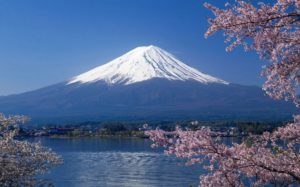Practice Circle: Mountain Meditation
 Visualization can be a powerful tool in meditation, and one of the visualizations used by both traditional Buddhists and MBSR practitioners is “becoming the mountain.” This Sunday at 8 pm CDST, Practice Circle will share a mountain meditation based on the work of Jon Kabat-Zinn. I hope you’ll join us! To join our video conference group, simply follow this link: https://zoom.us/j/968569855
Visualization can be a powerful tool in meditation, and one of the visualizations used by both traditional Buddhists and MBSR practitioners is “becoming the mountain.” This Sunday at 8 pm CDST, Practice Circle will share a mountain meditation based on the work of Jon Kabat-Zinn. I hope you’ll join us! To join our video conference group, simply follow this link: https://zoom.us/j/968569855
To prepare, you might wish to read the excerpt below from Kabat-Zinn’s Wherever You Go, There You Are.
Mountain Meditation
When it comes to meditation, mountains have a lot to teach, having archetypal significance in all cultures. Mountains are sacred places. People have always sought spiritual guidance and renewal in and among them. The mountain is the symbol of the prime axis of the world (Mt. Meru), the dwelling place of the gods (Mt. Olympus), the place the spiritual leader encounters God and receives his (her) commandments and covenant (Mt. Sinai). Mountains are held sacred, embodying dread and harmony, harshness and majesty. Rising above all else on our planet, they beckon and overwhelm with their sheer presence. Their nature is elemental, rock. Rock-hard. Rock-solid. Mountains are the place of visions, where one can touch the panoramic scale of the natural world and its intersection with life’s fragile but tenacious rootings. Mountains have played key roles in our history and prehistory. To traditional peoples, mountains were and still are mother, father, guardian, protector, ally.
In meditation practice, it can be helpful sometimes to “borrow” these wonderful archetypal qualities of mountains and use them to bolster our intentionality and resolve to hold the moment with an elemental purity and simplicity. The mountain image held in the mind’s eye and in the body can freshen our memory of why we are sitting in the first place, and of what it truly means, each time we take our seat, to dwell in the realm of non-doing. Mountains are quintessentially emblematic of abiding presence and stillness. . .
By becoming the mountain in our meditation, we can link up with its strength and stability, and adopt them for our own. We can use its energies to support our efforts to encounter each moment with mindfulness, equanimity, and clarity. It may help us to see that our thoughts and feelings, our preoccupations, our emotional storms and crises, even the things that happen to us are much like the weather on the mountain. We tend to take it personally, but its strongest characteristic is impersonal. The weather of our own lives is not to be ignored or denied. It is to be encountered, honored, felt, known for what it is, and held in high awareness since it can kill us. In holding it in this way, we come to know a deeper silence and stillness and wisdom than we may have thought possible, right within the storms. Mountains have this to teach us, and more, if we can come to listen.
Yet, when all is said and done, the mountain meditation is only a device, a finger pointing us toward somewhere. We still have to look, then go. While the mountain image can help us become more stable, human beings are far more interesting and complex than mountains. We are breathing, moving, dancing mountains. We can be simultaneously hard like rock, firm, unmoving, and at the same time soft and gentle and flowing. We have a vast range of potential at our disposal. We can see and feel. We can know and understand. We can learn; we can grow; we can heal, especially if we learn to listen to the inner harmony of things and hold the central mountain axis through thick and thin.
